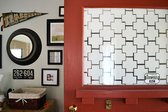
By: HouseLogic
Published: February 27, 2018
How to find exactly what you want, and how to work with the experts who’ll help you get it.
So you’re thinking about buying your first home. Your very own house (and mortgage). A place to call — and make — your own.
It’s a big move, literally and figuratively. Buying a house requires a serious amount of money and time. The journey isn’t always easy. It isn’t always intuitive. But when you get the keys to your new home — that, friend, can be one of the most rewarding feelings pretty much ever.
The key to getting there? Knowing the home-buying journey. Knowing what tools are at your disposal. And most importantly? Creating relationships with experts who can help you get the job done.
That’s where this guide comes in. We’ll show you not only the major steps you’ll take during the home-buying process, but also explain the relationships and experts you’ll need along the way. We’ve even made a handy infographic that outlines the home-buying process from start to finish.
You ready to live the dream? Here we go.
Do Your Homework
Oh sure, everybody wants to jump right into open houses. But before you even set foot into a foyer, you should identify your list of “musts” and “wants.” This list is an inventory of priorities for your search. And there’s so much to decide: Price, housing type, neighborhood, and school district — just to name a few.
To get yourself grounded, we recommend filling out this brief worksheet.
If you’re planning to buy a home with a partner (in life or in real estate), fill the worksheet out with them. You want to be on the same page while buying a house. If you’re not, you’ll be less able to give agents or lenders the information they need to help you. And you risk wasting time viewing homes you can’t afford — or don’t even want in the first place.
Start Shopping
Once you know what you’re looking for, the next step is to start looking at listings and housing information online. (This part? You’re going to crush it.)
Find a Great Agent
Your relationship with your real estate agent is the foundation of the home-buying process. (And your agent = your rock.) He or she is the first expert you’ll meet on your journey, and the one you’ll rely on most. That’s why it’s important to interview agents and find the agent who’s right for your specific needs.
Choose a Lender
Once you’ve found your agent (AKA, your new best friend), ask him or her to recommend at least three mortgage lenders that meet your financial needs. This is another big step, as you’ll be working with your lender closely throughout the home-buying process.
Pick a Loan (It’s Not So Bad)
Once you’ve decided on a lender (or mortgage broker), you’ll work with your loan agent to determine which mortgage is right for you. You’ll consider the percentage of your income you want to spend on your new house, and you’ll provide the lender with paperwork showing proof of income, employment status, and other important financials. If all goes well (fingers crossed) you’ll be pre-approved for a loan at a certain amount. (Sweet.)
Visit Open Houses, and Look Around
Now that you have both an agent who knows your housing preferences and a budget — and a lender to finance a house within that budget — it’s time to get serious about viewing homes. Your agent will provide listings you may like based on your parameters (price range, ZIP codes, features), and will also help you determine the quality of listings you find online. Then comes the fun part: Open houses and private showings, which give you the unique opportunity to evaluate properties in a way you can’t online.
Make an Offer
Once you find the home you want to buy, you’ll work with your agent to craft an offer that not only specifies the price you’re willing to pay but also the proposed settlement date and contingencies — other conditions that must be agreed upon by both parties, such as giving you the ability to do a home inspection and request repairs.
Negotiate, Negotiate, Negotiate
Making an offer can feel like an emotional precipice, almost like asking someone out on a date. Do they like me? Am I good enough? Will they say yes? It’s stressful! Some home sellers simply accept the best offer they receive, but many sellers make a counteroffer. If that happens, it’s up to you to decide whether you want your agent to negotiate with the seller or walk away. This is an area where your agent can provide real value by using their expert negotiating skills to haggle on your behalf and nab you the best deal.
Get the Place Inspected
If your offer is accepted, then you’ll sign a contract. Most sales contracts include a home inspection contingency, which means you’ll hire a licensed or certified home inspector to inspect the home for needed repairs, and then ask the seller to have those repairs made. This mitigates your risk of buying a house that has major issues lurking beneath the surface, like mold or cracks in the foundation. (No one wants that.) Here’s what to expect.
Ace the Appraisal
When you offer to buy a home, your lender will need to have the home appraised to make sure the property value is enough to cover the mortgage. If the home appraises close to the agreed-upon purchase price, you’re one step closer to settlement — but a low appraisal can add a wrinkle. Not one you can’t deal with. Here’s how to prepare.
Close the Deal
The last stage of the home-buying process is settlement, or closing. This is when you sign the final ownership and insurance paperwork and make this whole thing official. There’s some prep work you have to take care of first.
When it’s all said and done — break out the ros’e. You’ll have the keys to your new home!









